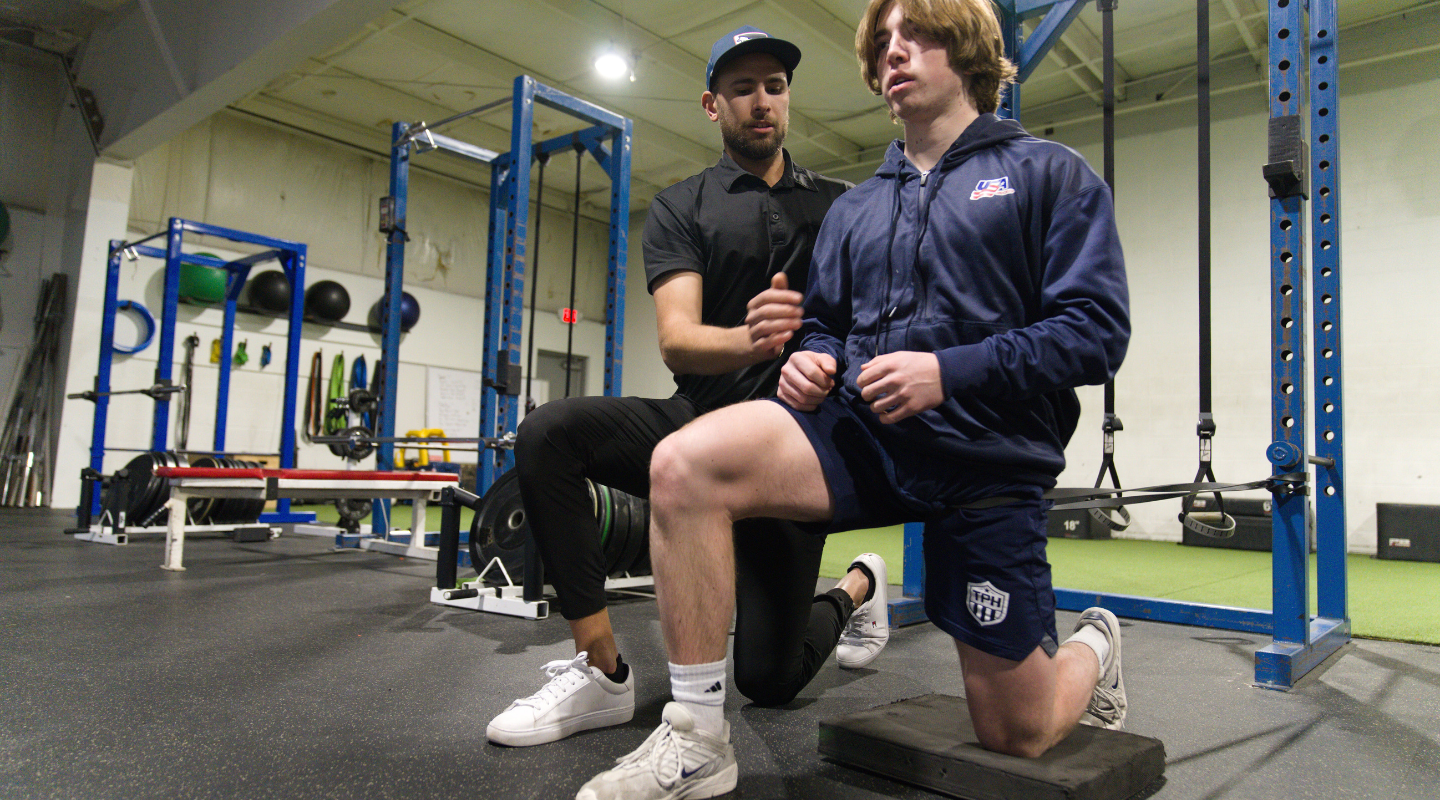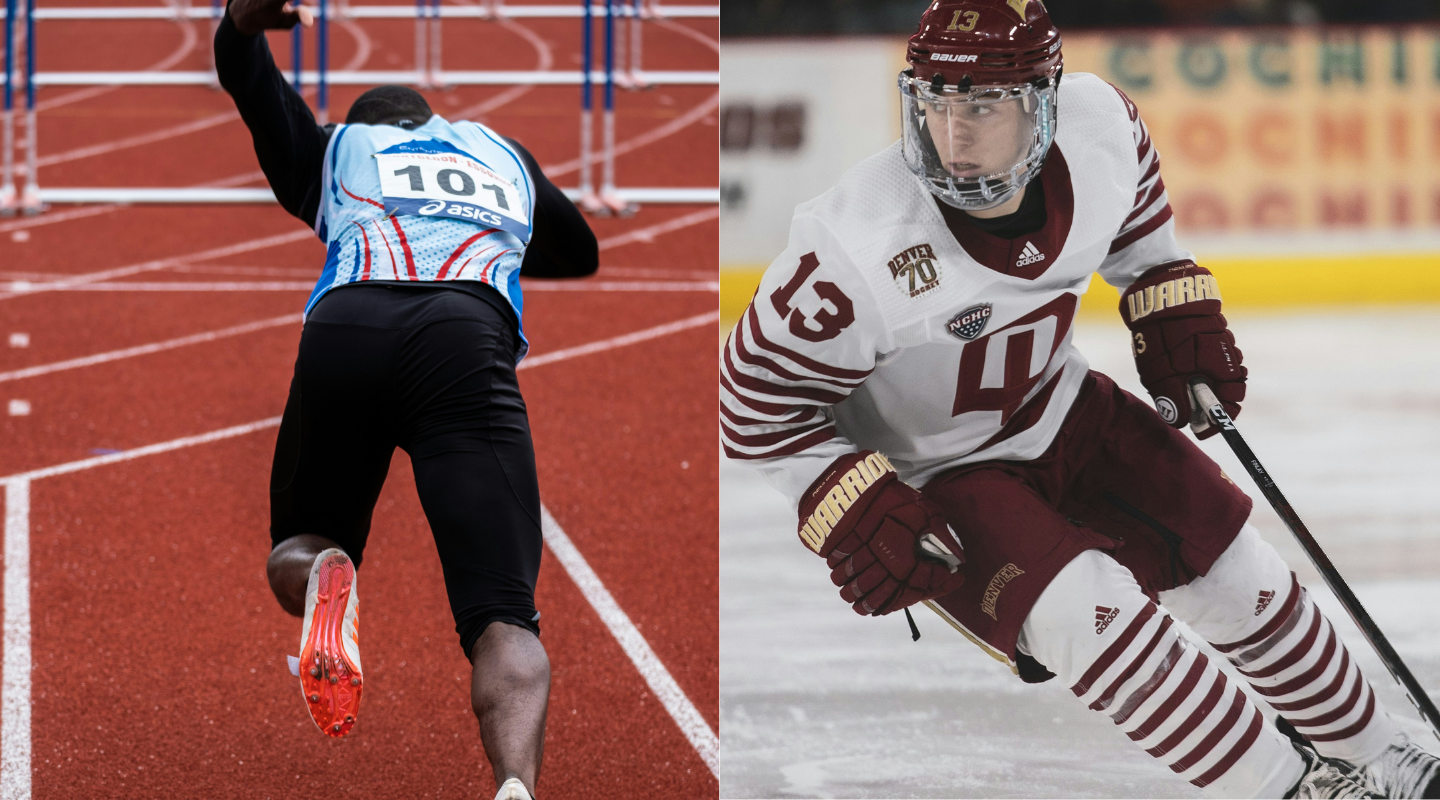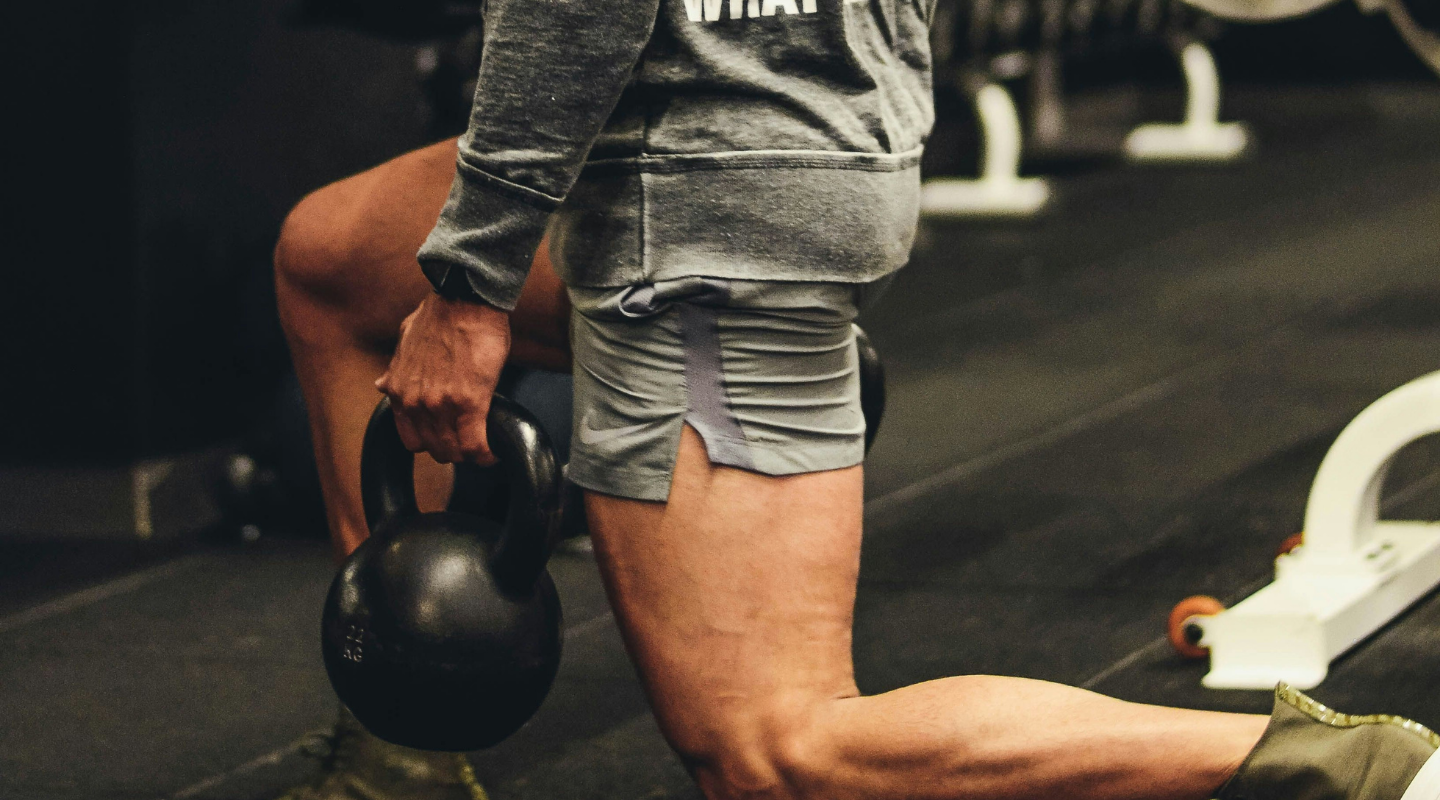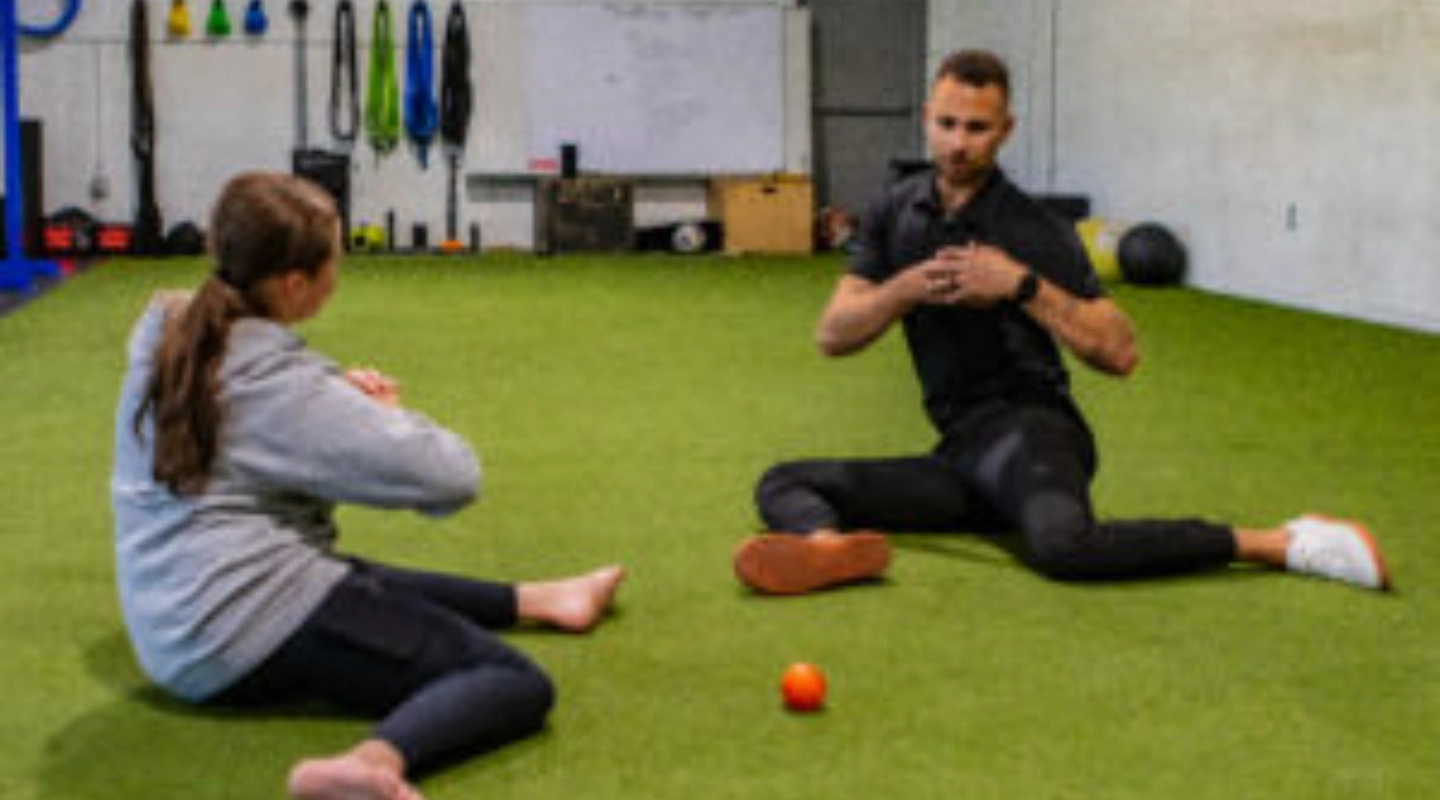
Femoroacetabular Impingement (FAI) in Hockey Players: Causes, Symptoms, Prevention, and Treatment
What Is FAI? (Brief Hip Anatomy & Impingement)
Definition: Femoroacetabular impingement (FAI) occurs when abnormal bone shape in the hip causes the femoral head (ball) and acetabulum (socket) to rub, creating painful pinching and joint irritation.
Cam vs. Pincer:
- Cam: Extra bone on the femoral head/neck grinds cartilage inside the socket.
- Pincer: Overcoverage of the socket rim pinches the labrum between bones.
- Combined: Many athletes have features of both.
- Joint Damage: Repeated impingement can tear the labrum and wear cartilage, accelerating osteoarthritis if not addressed.
Why Hockey Players Are Susceptible
Skating Mechanics: Deep hip flexion with internal rotation (crossovers, stride, goalie butterfly) increases contact between the femoral neck and socket edge.
High Cam Prevalence: Studies report very high cam-type morphology in elite hockey players, including NHL populations.
Youth Training Load: Year-round skating during skeletal development may stimulate cam formation (bone adapts to load).
Not Always Symptomatic: Many athletes show cam/pincer morphology without pain; FAI becomes problematic when it drives labral or cartilage injury.
(At Ghost Rehab & Performance in Grand Rapids/Byron Center, MI, we routinely assess hockey players for these risk factors and tailor prevention plans to their schedule and position.)
Common Symptoms and Warning Signs
- Groin or front-of-hip pain provoked by skating, pivots, deep squats, or prolonged sitting.
- Stiffness and limited motion, especially flexion and internal rotation; difficulty maintaining low stances.
- Clicking, catching, or locking, often with labral involvement.
- Pain with prolonged sitting or post-game flare-ups.
- Limping or stride changes; toe-out walking to avoid painful ranges.
- “C-sign” pain description: hand cupping deep hip joint.
Risks of Leaving FAI Untreated
- Labral tears with instability and painful catching.
- Cartilage wear and early osteoarthritis.
- Chronic pain and loss of function in sport and daily life.
- Reduced performance (power, ROM, acceleration, agility).
- Compensatory injuries to the opposite hip, knees, or low back.
Prevention Strategies for Hockey
- Thorough dynamic warm-ups (aerobic ramp + hip-focused mobility).
- Hip mobility (rock-backs, deep lunge, figure-4, adductor mobility; banded hip distraction as tolerated).
- Strengthen support (glutes, hamstrings, core) to optimize pelvic control and hip mechanics; train pain-free ranges.
- Avoid overuse/early specialization in youth; encourage seasons off, multi-sport participation, and load monitoring.
- Technique coaching to minimize excessive, repetitive extremes.
- Address symptoms early; modify drills and strength work if groin/hip pain emerges.
- Off-ice posture hygiene (break up sitting, hip flexor relief, core/posterior-chain balance).
(Our team in West Michigan integrates warm-up templates, mobility circuits, and strength progressions into team and individual programs for hockey athletes.)
How FAI Is Diagnosed
- Clinical evaluation: History, FADIR/FABER tests, ROM, gait/stride observations.
- Imaging:
- X-ray (alpha angle >~55° suggests cam; look for pincer signs and arthritis).
- MRI/MRA to assess labrum and cartilage; CT for pre-op 3D planning when needed.
- Diagnostic injection: Image-guided intra-articular anesthetic (± corticosteroid) can confirm intra-articular pain sources.
Treatment Options
Conservative (Non-Surgical)
- Activity modification & rest from provocative ranges; smart in-season adjustments.
- Physical therapy: Restore ROM, strengthen glutes/core/rotators, improve mechanics (hip hinge, stride), reduce front-hip overload.
- NSAIDs for short-term symptom relief as medically appropriate.
- Injections: Corticosteroid for temporary relief/diagnosis; sparingly used in young athletes.
- Ongoing management: Maintain mobility/strength routine, progressive load, symptom monitoring.
Surgical
- When to consider: Persistent pain despite rehab or imaging-confirmed structural injury limiting function.
- Hip arthroscopy: Cam/pincer resection, labral repair/debridement, chondroplasty; typically outpatient.
- Outcomes: High return-to-play rates in elite hockey; earlier intervention before advanced cartilage loss yields better results.
Returning to Play
- Commit to rehab: Phase-based restoration of ROM → strength → neuromuscular control → skating-specific progressions.
- Gradual on-ice progression: Non-contact skill → intensity/changes of direction → controlled contact → full play.
- Criteria-based clearance: Symmetry of ROM, ≥90% strength, sport-specific tasks at speed without pain (e.g., Vail Hip Sports Test).
- Typical timelines: Weeks–months for conservative care; ~4–8 months post-arthroscopy (individualized).
- Psychological readiness and post-return maintenance (mobility/strength “keepers,” periodic check-ins).
- Smart adjustments (e.g., goalie butterfly volume, off-ice workload) support longevity.
Key Takeaway
FAI is common in hockey due to sport-specific loads, but with education, early recognition, and a structured plan, athletes can prevent escalation, treat symptoms effectively, and return to high-level play. Addressing issues early protects careers and long-term hip health.
(If you’re in Grand Rapids or the greater West Michigan area and suspect FAI, Ghost Rehab & Performance in Byron Center provides evaluation, imaging coordination, and hockey-specific rehab to keep you on the ice.)
References
- Powers CM, et al. (2020). Rehabilitation strategies for FAI and post-arthroscopy patients. J Orthop Sports Phys Ther, 50(3), 123–135.
- Ayeni OR, et al. (2012). Femoroacetabular impingement in elite ice hockey players. J Bone & Joint Surg, 94(10), e58.
- Agricola R, et al. (2013). Development of Cam-type deformity in adolescent and young male soccer players: a prospective cohort study. Am J Sports Med, 42(4), 798–806.
- Philippon MJ, et al. (2014). The prevalence of cam-type deformity in high-level youth hockey players. Am J Sports Med, 41(6), 1357–1361.
- Siebenrock KA, et al. (2011). The cam-type deformity of the proximal femur arises in childhood in response to vigorous sporting activity. Clin Orthop Relat Res, 469(11), 3229–3240.
- Larson CM, et al. (2013). Radiographic prevalence of femoroacetabular impingement in collegiate and professional ice hockey players. Am J Sports Med, 41(1), 134–138.
- Economopoulos KJ, et al. (2015). The effect of skating posture on hip joint loading during on-ice skating in hockey players. Clin Biomech, 30(6), 589–594.
- Clohisy JC, et al. (2008). A systematic approach to the diagnosis and treatment of FAI. J Am Acad Orthop Surg, 16(9), 561–570.
- Ganz R, et al. (2003). Femoroacetabular impingement: a cause for osteoarthritis of the hip. Clin Orthop Relat Res, 417, 112–120.
- Beck M, et al. (2005). The anatomy and function of the labrum in the hip. Clin Orthop Relat Res, 429, 16–23.
- Byrd JWT. (2005). Hip arthroscopy in athletes. Oper Tech Sports Med, 13(2), 78–88.
- Kuhns BD, et al. (2015). Outcomes after hip arthroscopy in elite athletes: a systematic review. Am J Sports Med, 43(1), 1–8.
- Domb BG, et al. (2014). Return to sport after hip arthroscopy in elite athletes. Am J Sports Med, 42(1), 180–185.
- Kivlan BR, et al. (2011). Relationship between lower extremity mechanics and patient-reported outcomes in athletes with FAI. J Sport Rehabil, 20(4), 457–471.
- Menge TJ, et al. (2017). Outcomes of hip arthroscopy in competitive hockey players: return to sport and performance metrics. Orthop J Sports Med, 5(2), 2325967116689490.
- Agricola R, et al. (2014). Cam impingement and the development of osteoarthritis of the hip. Orthop Clin North Am, 44(4), 449–461.
- Kelly BT, et al. (2005). Arthroscopic labral repair in the hip: surgical technique and review of literature. Arthroscopy, 21(12), 1496–1504.
- Takla A, et al. (2020). Physical examination and imaging of the hip in athletes. Clin Sports Med, 39(2), 163–179.
- Khan M, et al. (2016). Predictors of outcomes after hip arthroscopy for FAI. Sports Health, 8(2), 141–148.
- Nepple JJ, et al. (2013). The hip fluid seal—Part I: the role of labral and cartilaginous structures in hip stability. Clin Orthop Relat Res, 471(4), 1138–1143.
- Reiman MP, et al. (2015). Femoroacetabular impingement surgery, rehabilitation, and return to sport: a systematic review. Int J Sports Phys Ther, 10(4), 547–565.
- Scott EJ, et al. (2021). Return to sport after femoroacetabular impingement surgery in high-level athletes: a comprehensive review. Arthrosc Sports Med Rehabil, 3(2), e423–e430.
- Casartelli NC, et al. (2015). The hip sports activity scale: development and validation. Am J Sports Med, 43(4), 826–832.
- LaPrade RF, et al. (2020). A sports physical therapy approach to FAI and hip arthroscopy. Sports Health, 12(2), 122–130.
- Menge TJ, Briggs KK, Philippon MJ. (2017). Survival and performance of professional athletes after hip arthroscopy for femoroacetabular impingement. Am J Sports Med, 45(6), 1442–1448.
- Larson CM, et al. (2010). Functional testing in FAI: the Vail Hip Sports Test. Orthop J Sports Med, 2(1), 11–17.
- Fabricant PD, et al. (2015). Early outcomes after hip arthroscopy for FAI in athletes under 18 years of age. J Pediatr Orthop, 35(2), 123–129.
- Feeley BT, et al. (2016). Return to elite-level play after hip arthroscopy among NHL players. Orthop J Sports Med, 4(3), 2325967116632752.
- Sampson TG. (2005). Arthroscopic treatment of femoroacetabular impingement: a review. Clin Orthop Relat Res, 441, 222–229.
- Philippon MJ, et al. (2007). Arthroscopic labral repair and treatment of FAI: minimum 2-year follow-up. Orthopedics, 30(8), 647–652.
- Krych AJ, et al. (2013). Diagnostic hip injections: efficacy, accuracy, and indications. Clin Sports Med, 32(3), 411–419.
- Tijssen M, et al. (2016). Conservative treatment of FAI: a systematic review. Br J Sports Med, 50(19), 1219–1226.
- de Sa D, et al. (2015). Hip arthroscopy for FAI: a review of clinical outcomes and return to sport. Sports Health, 7(3), 268–272.
- Notzli HP, et al. (2002). MRI of the femoral head-neck junction in FAI. Clin Orthop Relat Res, 418, 67–73.
- Byrd JWT, Jones KS. (2011). Hip arthroscopy in athletes: 10-year outcomes. Am J Sports Med, 39(1), 117–123.
- O’Donnell J, et al. (2021). Femoroacetabular impingement: current concepts and controversies. J ISAKOS, 6(4), 172–180.
- Sansone M, et al. (2016). Predictors of outcome after hip arthroscopy in athletes. Knee Surg Sports Traumatol Arthrosc, 24(10), 3356–3362.
- Ayeni OR, et al. (2014). Femoroacetabular impingement in young athletes: a review. Clin J Sport Med, 24(6), 464–470.
.png)




